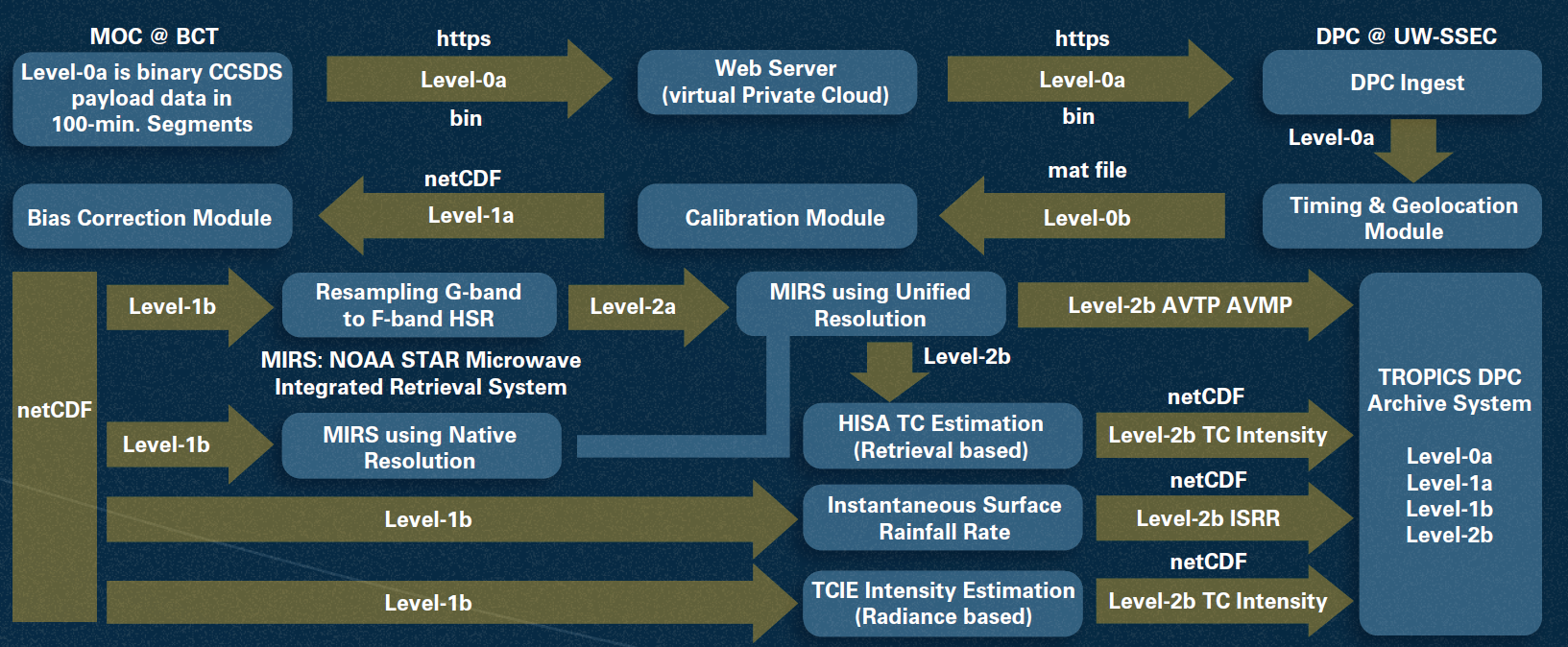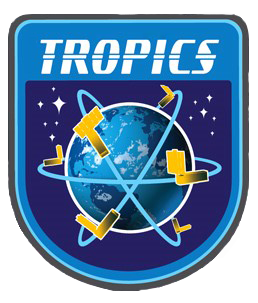After the launch failure in June 2022 that lost two CubeSats, NASA decided to rebid the remaining two launches and Rocket Lab was awarded the contract with the goal of launching before the 2023 North Atlantic hurricane season. The TROPICS constellation now has two CubeSats in each of two orbital planes with the following launch parameters: equally spaced RAAN (±10° tolerance), 550 km altitude (±20 km tolerance), 30° inclination (±3° tolerance).
One CubeSat (TROPICS-01), named the TROPICS Pathfinder, launched before the constellation on 30 June 2021 on SpaceX Transporter 2 with the Maverick Space Systems as the launch integrator. Analyses have shown orbit lifetime of 9 years, well over the expected mission lifetime of one year and well in advance of the 25-year de-orbit requirement. The new two-orbital-plane configuration still yields better than 60-minute median revisit rates with spatial resolution and swath width comparable to current state-of-the-art sensors.
TROPICS constellation
Command, Control, Communication and Data Elements for the TROPICS Constellation of CubeSats


L1a Geolocated Antenna Temperatures at native spatial resolution
L1b Geolocated Brightness Temperatures at native spatial resolution
L2a Unified Resolution Brightness Temperatures (G-band resampled to F-band resolution)
L2b Atmospheric Vertical Profiles: Temperature and Moisture using modified NOAA MIRS algorithm
L2b Instantaneous Surface Rain Rate using Goddard PRPS algorithm
L2b Tropical Cyclone Intensity: UW-M TCIE algorithm
L2b Tropical Cyclone Intensity: Colorado State HISA algorithm
Pathfinder Data Product Maturity Levels Tracker: https://tropics.ssec.wisc.edu/
